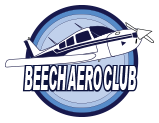1974 Sport B19,
I was not happy with the appearance of my FWF NON-Custom Ducts, functional but not pretty. The Custom Ducts are absolutely beautiful.
ALL AIRCRAFT IN THIS GROUP;
There is some missing information here on the last duct, fresh air duct RH Lower Cowl (NACA Scoop) to Cabin Heat Valve The dimensions are missing on the website for this duct, they should be 3" X 22".
POWER FLOW EXHAUST AIRCRAFT IN THIS GROUP;
If you are running the Power Flow Exhaust STC the 2.5" Muffler shroud air inlet from the oval engine baffle needs to be 22 inches long minimum. I have used the 2.5" X 15.5" shroud inlet duct for the muffler shroud to carb heat duct. And expanded the 2.5" X 18" duct to 2.5" X 22" for the muffler shroud air inlet duct. This is what worked best for me.
I hope this helps, saves you some money and is not to confusing.
Sciscoe
FROM THE WEBSITE;
"Technical Editor:
These are the air ducts needed for a 1970 and later Sport.
FIREWALL FORWARD DUCTS
115167DXX121063 Carb filtered inlet air, 3” by 26.5”, standard cuffs both ends, 1 each
115167DXX100723 Carb heat duct, 2.5” by 18”, standard cuffs both ends, 1 each
115167EXX121363 Muffler shroud to cabin heat valve, 3” by 34”, standard cuffs both ends, 1 each
115167EXX100623 Muffler shroud inlet air, 2.5” by 15.5”, standard cuffs both ends, 1 each
115167EXX080623 Cabin heat valve to defroster valve, 2” by 15.5”, standard cuff one end, 2.125” cuff on defroster end, 1 each
115167EXX080803 Fresh air duct from lower RH cowl to cabin heat valve, standard cuff one end, 3.125” cuff other end, 1 each"
Just as a foot note, I am de-modifying my aircraft from the AD 73-23-03 (if I remember correctly) which removed these double walled ducts from under our engine cowls. Mike R. had posted a very long time ago that the construction of Custom Ducts should avoid the delamination and air blockage of the other double walled ducts which the AD removed. I will be watching closely. And you should as well, if you are running these double walled ducts.
I was not happy with the appearance of my FWF NON-Custom Ducts, functional but not pretty. The Custom Ducts are absolutely beautiful.
ALL AIRCRAFT IN THIS GROUP;
There is some missing information here on the last duct, fresh air duct RH Lower Cowl (NACA Scoop) to Cabin Heat Valve The dimensions are missing on the website for this duct, they should be 3" X 22".
POWER FLOW EXHAUST AIRCRAFT IN THIS GROUP;
If you are running the Power Flow Exhaust STC the 2.5" Muffler shroud air inlet from the oval engine baffle needs to be 22 inches long minimum. I have used the 2.5" X 15.5" shroud inlet duct for the muffler shroud to carb heat duct. And expanded the 2.5" X 18" duct to 2.5" X 22" for the muffler shroud air inlet duct. This is what worked best for me.
I hope this helps, saves you some money and is not to confusing.
Sciscoe
FROM THE WEBSITE;
"Technical Editor:
These are the air ducts needed for a 1970 and later Sport.
FIREWALL FORWARD DUCTS
115167DXX121063 Carb filtered inlet air, 3” by 26.5”, standard cuffs both ends, 1 each
115167DXX100723 Carb heat duct, 2.5” by 18”, standard cuffs both ends, 1 each
115167EXX121363 Muffler shroud to cabin heat valve, 3” by 34”, standard cuffs both ends, 1 each
115167EXX100623 Muffler shroud inlet air, 2.5” by 15.5”, standard cuffs both ends, 1 each
115167EXX080623 Cabin heat valve to defroster valve, 2” by 15.5”, standard cuff one end, 2.125” cuff on defroster end, 1 each
115167EXX080803 Fresh air duct from lower RH cowl to cabin heat valve, standard cuff one end, 3.125” cuff other end, 1 each"
Just as a foot note, I am de-modifying my aircraft from the AD 73-23-03 (if I remember correctly) which removed these double walled ducts from under our engine cowls. Mike R. had posted a very long time ago that the construction of Custom Ducts should avoid the delamination and air blockage of the other double walled ducts which the AD removed. I will be watching closely. And you should as well, if you are running these double walled ducts.
